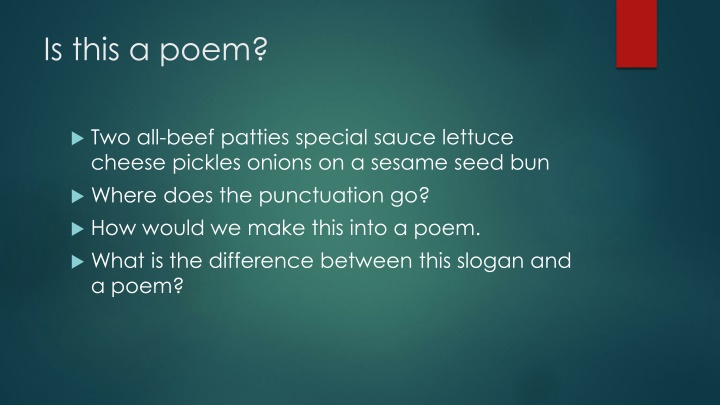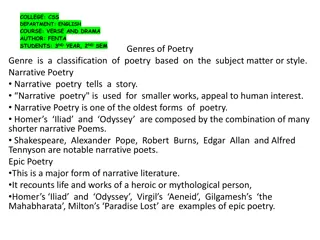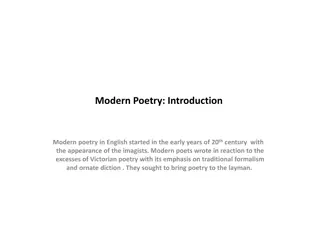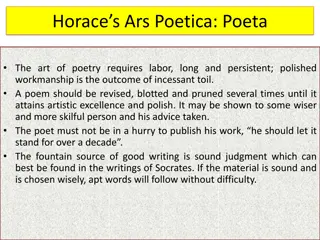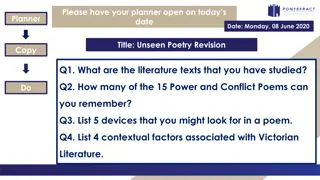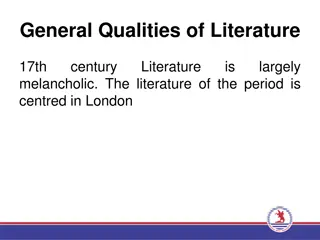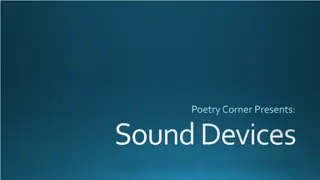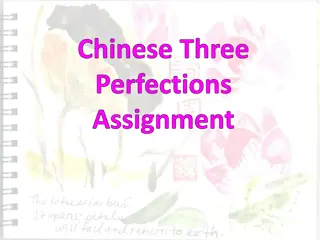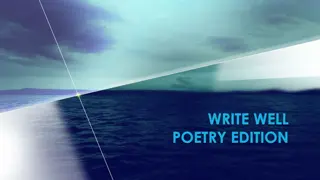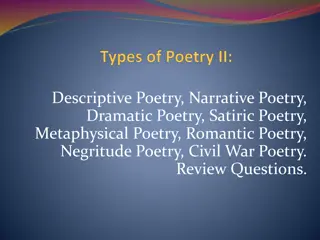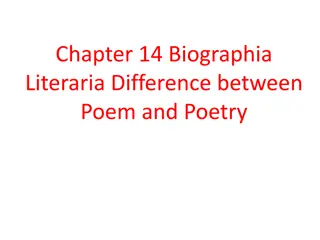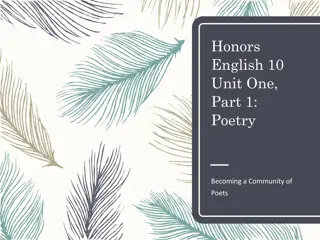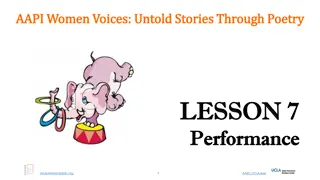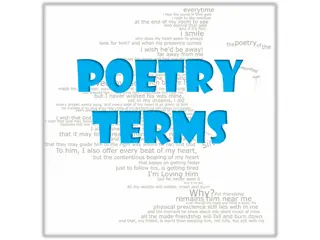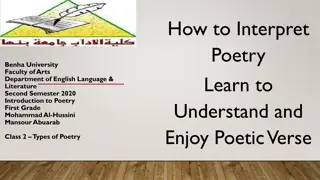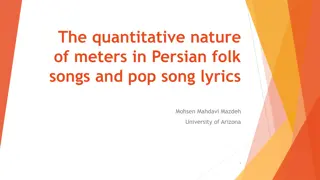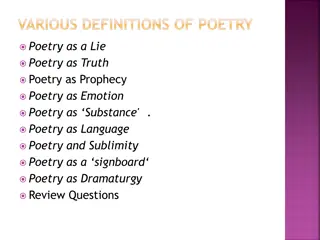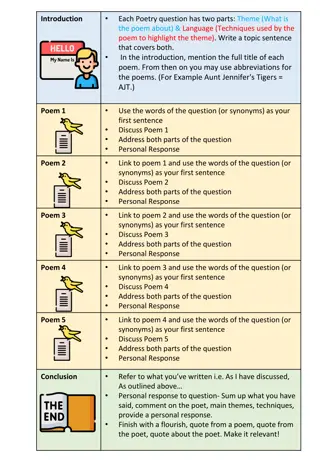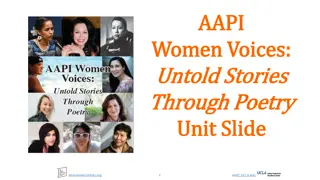Poetry Techniques and Devices
Discover the nuances of poetry through an exploration of techniques and devices such as word choice, structure, rhythm, tone, and more. Dive into the world of poetry to understand how writers influence readers and convey messages effectively.
Download Presentation

Please find below an Image/Link to download the presentation.
The content on the website is provided AS IS for your information and personal use only. It may not be sold, licensed, or shared on other websites without obtaining consent from the author.If you encounter any issues during the download, it is possible that the publisher has removed the file from their server.
You are allowed to download the files provided on this website for personal or commercial use, subject to the condition that they are used lawfully. All files are the property of their respective owners.
The content on the website is provided AS IS for your information and personal use only. It may not be sold, licensed, or shared on other websites without obtaining consent from the author.
E N D
Presentation Transcript
Is this a poem? Two all-beef patties special sauce lettuce cheese pickles onions on a sesame seed bun Where does the punctuation go? How would we make this into a poem. What is the difference between this slogan and a poem?
Learning objectives: Learning objectives: To demonstrate and understand how a writer effects the reader: The importance of word choice, word order and syntax. The importance of structure in writing in all forms To explore Rhythm, pace, style, voice, tone, mood. To recap and further explore simile and metaphor. To continue to explore theme and its importance To experiment with form poetry To help with word choice, syntax (metre and stanza) structure, To practise reading work aloud that will also help with punctuation and sentence structure TO EXPLORE AND REFLECT UPON THE WORLD AROUND US!
Poetry Making others look at the world differently: Amselm Keifer
Benjamin Zephaniah Rong radio Benjamin Zephaniah http://www.youtube.com/watch?v=a3HjMcY50Kc
simple basic terms & techniques THEME= the message of the poem; the point the author wishes to make TOPIC= what the poem is about (the subject matter ). TONE = the attitude of the writer towards his subject matter. MOOD = feelings expressed. Includes what the writer/speaker feels AND how the reader feels when they read the poem. May also be related to the atmosphere created.. NOTE: Tone & mood are closely related. The tone of voice used will often influence the mood/atmosphere. Yeats uses a sarcastic tone to reveal his anger and frustration when he says For men were born to pray and save in September 1913 .
Frank OHara Being inspired by the world around you New York 1950 s Beat poetry/generation Abstract Expressionism Jackson Pollack Method Acting Ginsberg Jack Kerouac Jazz Thelonius Monk
Class activities:Mimic the poems Read the Frank O Hara poem Ave Maria Mothers of America let your kids go to the movies Identify mood, theme, tone
Class Activities: Pick two of the below to write about Write a poem about yourself in which nothing is true. Write a poem using all of the following words: exquisite, visit, glisten Write a poem about a place that frightens you or a place where you feel happy. Try to recreate the feeling of the place Write a poem from the perspective of a character in a fairy tale Write a poem about your shadow. (Some ideas for brainstorming: How does it change when you move? What does it look like in different kinds of light, in different situations? What would happen if you lost it? Does it have a secret life?)
John Hegley John Hegley https://www.youtube.com/watch?v=T4TeQcqJGUE
Have you: Demonstrate an understanding of poetic language and structure. Critique a number of sources discuss how performance/interactive and multi-media platforms affect the spoken word poetry. How did you use poetic devices such as imagery and metaphor (figurative language)? What other techniques have you used: alliteration, rhyme and metre, structure use of punctuation (or not) and visual impact of structure.
Five basic rhythms of varying stressed (/) and unstressed (x) syllables. English poetry employs five basic rhythms of varying stressed (/) and unstressed (x) syllables. The meters are iambs, trochees, spondees, anapests and dactyls. In this document the stressed syllables are marked in boldface type rather than the tradition al "/" and "x." Each unit of rhythm is called a "foot" of poetry. The meters with two-syllable feet are IAMBIC (x /) : That time of year thou mayst in me behold TROCHAIC (/ x): Tell me not in mournful numbers SPONDAIC (/ /): Break, break, break/ On thy cold gray stones, O Sea! Meters with three-syllable feet are ANAPESTIC (x x /): And the sound of a voice that is still DACTYLIC (/ x x): This is the forest primeval, the murmuring pines and the hemlock (a trochee replaces the final dactyl)
Commission: Commission: poems themed on WW1 commemoration/remembrance: short stories, poems and journalistic pieces exploring the men and women who fought in the war and how it affected the nation. Look into local heroes, family members/ancestors etc.
